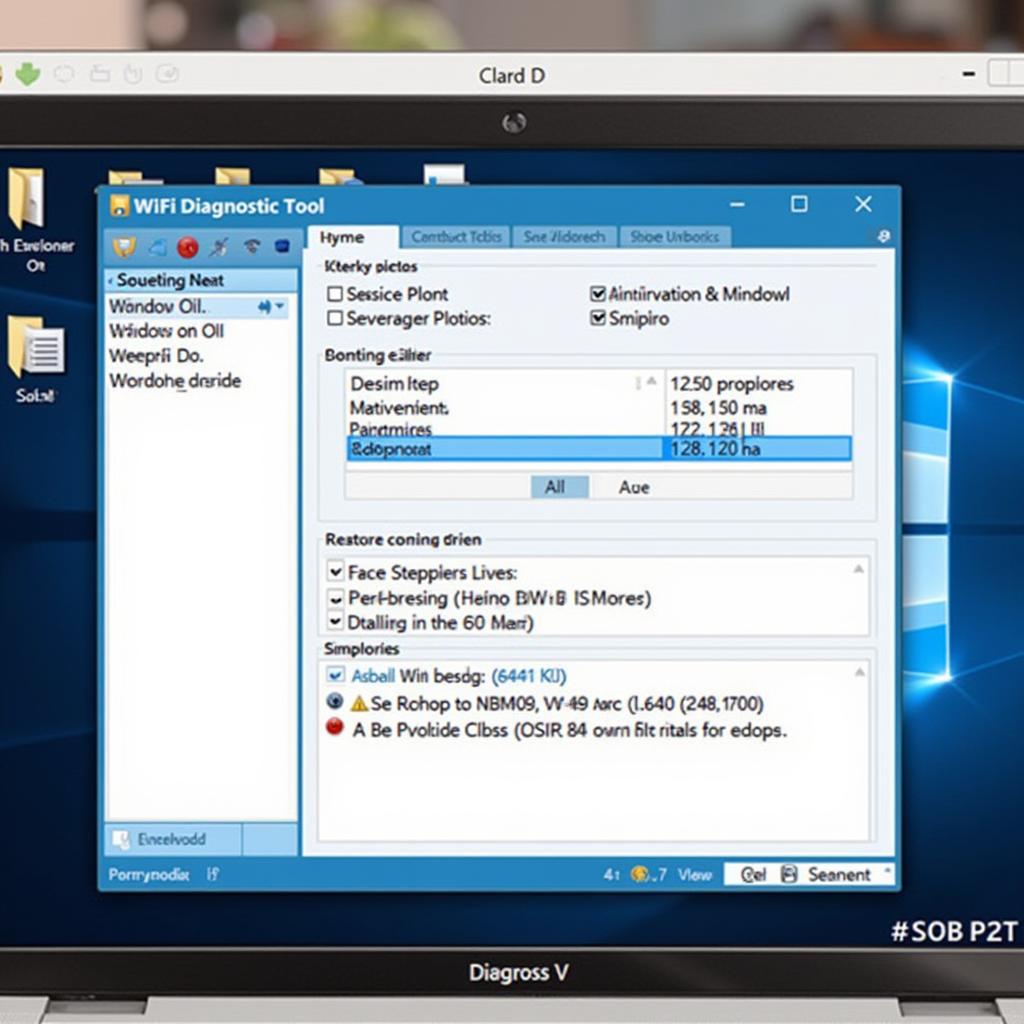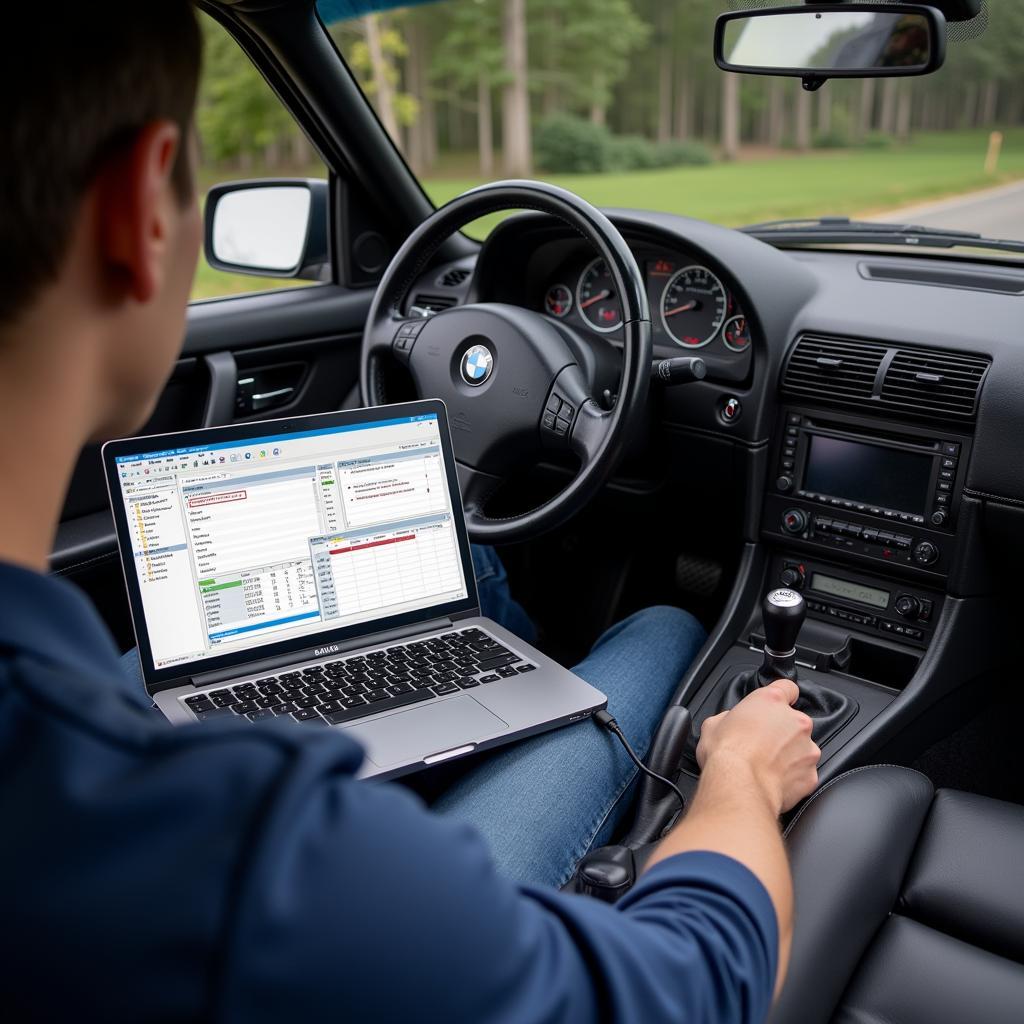A Diagnostic Tool Ic Block is the brain of your car’s onboard diagnostic system (OBD). It plays a crucial role in monitoring various systems and components within your vehicle, ensuring everything runs smoothly. When a fault occurs, the IC block stores a specific Diagnostic Trouble Code (DTC) in its memory, like a digital breadcrumb trail leading you to the source of the problem. Understanding how to use a diagnostic tool to interpret these codes can be invaluable for car owners, repair shops, and technicians alike.
Imagine this: your check engine light flashes on, striking fear into the heart of any driver. Rather than panicking or rushing to a mechanic for a potentially costly diagnosis, what if you could understand the problem yourself? That’s the power a diagnostic tool puts in your hands.
Decoding the Language of Your Car: How Diagnostic Tools Work
Think of your car as speaking a complex language, one that uses fault codes instead of words. A diagnostic tool acts as your translator. It connects to the IC block through the OBD port, usually located under the dashboard on the driver’s side.
Once connected, the tool can:
- Read DTCs: This reveals the specific faults registered by the IC block.
- Display live data: Monitor real-time parameters like engine speed, coolant temperature, and oxygen sensor readings.
- Run tests: Activate specific components like fuel injectors or solenoids to check their operation.
Choosing the Right Diagnostic Tool: Finding Your Perfect Match
Just like cars, diagnostic tools come in a variety of shapes and sizes. Finding the right one depends on your needs and budget.
- Basic code readers: These affordable tools can read and clear basic DTCs, ideal for DIY enthusiasts.
- Advanced scan tools: Offer a wider range of functions including live data, bi-directional control, and access to manufacturer-specific codes, suitable for professional technicians.
- PC-based tools: Connect to your computer and offer comprehensive software suites with advanced diagnostic capabilities, perfect for experienced users or repair shops.
 Mechanic Using a Diagnostic Tool
Mechanic Using a Diagnostic Tool
From Codes to Solutions: Using a Diagnostic Tool Effectively
Finding a DTC is only the first step. The real key is interpreting what it means and taking appropriate action.
- Identify the DTC: Write down the alphanumeric code displayed on your diagnostic tool.
- Consult reliable sources: Use online databases, repair manuals, or manufacturer websites to decipher the code’s meaning.
- Investigate potential causes: DTCs often point to a system rather than a specific component. Further inspection, testing, and analysis might be necessary.
- Address the root cause: Once you’ve identified the faulty component, repair or replace it as needed.
- Clear the code: After the repair, use your diagnostic tool to clear the DTC and ensure the check engine light stays off.
Beyond the Basics: Advanced Features of Diagnostic Tools
For those seeking a deeper dive into vehicle diagnostics, advanced tools offer a treasure trove of capabilities.
- Live data analysis: Observe sensor readings in real-time, allowing you to pinpoint intermittent problems or confirm component operation.
- Bi-directional control: Command specific components on and off, helpful for testing actuators or verifying wiring integrity.
- ECU coding and programming: Access the vehicle’s Electronic Control Unit (ECU) for advanced functions like key programming or software updates (requires specialized knowledge).
Common Pitfalls to Avoid: Navigating Diagnostic Challenges
While powerful, diagnostic tools aren’t foolproof.
- Misinterpreting codes: Always research DTCs thoroughly as the same code can have different meanings across vehicle makes and models.
- Treating symptoms, not causes: DTCs indicate a problem, not necessarily the root cause. Don’t jump to conclusions without proper investigation.
- Relying solely on the tool: Combine diagnostic readings with your own knowledge, experience, and common sense.
Conclusion
A diagnostic tool IC block is an essential component in modern vehicles, providing a gateway to understanding and resolving car problems. Whether you’re a car enthusiast, a repair shop owner, or a seasoned technician, mastering the use of a diagnostic tool empowers you with the knowledge and control to keep vehicles running smoothly. Remember, a diagnostic tool is a powerful ally, but it’s your expertise and problem-solving skills that truly make the difference.
Need help with your car’s diagnostic system? Contact the experts at ScanToolUS. Call us at +1 (641) 206-8880 or visit our office at 1615 S Laramie Ave, Cicero, IL 60804, USA. We’re here to help you get back on the road!


